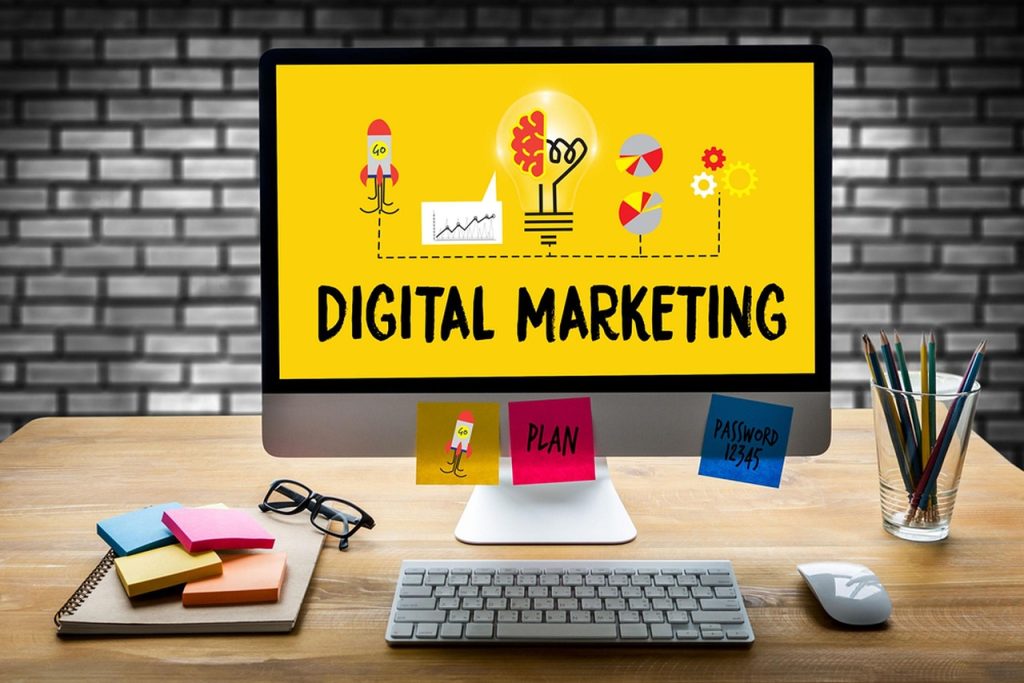
E-commerce Trends: Top 9 E-commerce Trends for Retailers in 2021
What are the hottest e-commerce trends of 2021?
Find out right here, as we run through the latest e-commerce trends are and why e-commerce trends are so important to keep up on. As with all small business owners, online retailers can face real challenges in growing their businesses.
Fortunately, e-commerce technology trends are reshaping the industry and making it easier than ever to improve online businesses.
With the information provided below, you’ll get a firmer grasp on how to keep your e-commerce business running at full capacity.
What are e-commerce trends?
Essentially, trends in the e-commerce industry encompass all frequently used methods of improving or bolstering online sales strategies and performance. The latest e-commerce trends are broadly connected to recent innovations in digital technology in general.
If you spend any time on the internet, then you’ve undoubtedly seen or at least heard of many of the newest trends in e-commerce (not to be confused with retail technology trends online and offline).
Whether the aim of e-commerce trends have more to do with the methods of selling online or the means of selling online, the majority might be more accurately labeled as e-commerce technology trends since it’s high tech that makes them possible.
Additionally, while there is a growing number of small businesses that operate exclusively online, it’s worth pointing out that even their big corporate competitors have adopted many e-commerce trends. Keep reading to find out why e-commerce trends are so popular.
Side note: If you decide to start an e-commerce store, you’ll want to keep close tabs on your business’s trends also, not just broader trends in e-commerce.
More specifically, you’ll want to track and monitor trends in your store’s profits and expenses so you can optimize your bottom line. For Shopify sellers in particular, there’s a very easy way to stay on top of their business’s financial trends.
The ultimate Shopify calculator: BeProfit – Profit Tracker
This Shopify profit calculator gives you a full breakdown of all your expenses so you can spot where to make improvements in order to make the most of your store’s budget.
Try the BeProfit expense and profit margin calculator, here.
Why are e-commerce trends important for retailers?
1. Consumers have gone mobile, and you should too!
According to Pew Research data, more than 80% of Americans own a smartphone. Data also suggests that e-commerce is projected to reach nearly 12.5% of all retail sales in the U.S. by the end of 2021. It doesn’t appear that the spread of smartphones and online shopping is going to slow down anytime soon. And with more than $1.4 trillion being generated by the digital economy every year, it should be clear why e-commerce business owners are so keen on engaging with a mobile audience.
Even if you’re late to the game, you stand a lot to gain by reaching customers on their mobiles. Create a mobile app, if possible. At the very least, make sure that your website is mobile-friendly so that customers won’t be pushed away by a glitchy interface.
2. Potential partnerships are a click away
It isn’t just customers that your e-commerce business should be focused on. One of the latest e-commerce trends is the creation of fruitful partnerships through connection with influencers online. Research has shown that influencer credibility relies on four major factors:
- Trustworthiness
- Expertise
- Attractiveness
- Similarity
Although the first two factors relate more to communication skills, the last two pertain to the physical characteristics of the influencer. Consider the fact that the vast majority of Facebook, Twitter, and Instagram users are under 35 years old, and that Millennials spend roughly 4 hours on mobile internet usage every day, and it starts to become clearer which influencers tend to gain the most traction and attract the biggest number of followers.
Influencers who already have a large following essentially work as an amplified form of word-of-mouth advertising, which is statistically shown to be the best form of advertisement.
3. Customers are handling their money digitally
The development of financial technology (fintech) has spurred on the growth and spread of digital banking among Americans. In just the past 5 years, the number of digital banking users has risen by more than 20% to a total of over 161 million people. To put that in perspective, that’s almost half of the entire U.S. population!
Regarding e-commerce trends more specifically, it’s worth noting that the number of PayPal users has nearly tripled from 100 million accounts in 2011 to more than 286 million accounts in 2021. That indicates a rise in the demand for online payment solutions, which aligns quite nicely with a 300% increase in online retail sales that the industry has seen over the past 20 years. And, with almost 90% of Gen Z consumers saying that they prefer to do their shopping online than in-store, it appears that e-commerce trends in 2021 are likely to continue for the foreseeable future.
[bctt tweet=”With almost 90% of #GenZ consumers saying that they prefer to do their shopping online than in-store, it appears that #eCommerce trends in 2021 are likely to continue for the foreseeable future.” username=”Become_co”]
It’s not only customers who are using fintech – small business owners are also using fintech to obtain financing with less stress and better approval odds. Become is one of the fastest-growing companies using technology to help business owners get funded, but that’s not all that they do.
With their proprietary LendingScore™ technology, Become gives businesses unique insights into the funding process that other lending marketplaces (and banks for that matter!) don’t provide to their customers. Obtaining business loans has never been faster, simpler, or more likely to result in approval.
4. Building your brand is more effective with multimedia
While it’s certainly true that more ‘traditional’ business models may also benefit their brand by using different forms of media to market and advertise themselves, e-commerce businesses are somewhat of a more natural fit with the digital media that dominates the Age of the Internet we all live in.
[bctt tweet=”Simply put, if you’re conducting #business online and you’re not communicating with customers on their ‘level’, then you’re missing out on one of the top #ecommerce trends in 2021…” username=”Become_co”]
Simply put, if you’re conducting business online and you’re not communicating with customers on their ‘level’, then you’re missing out on one of the top e-commerce trends in 2021 while simultaneously doing yourself a great disservice in the process. What does that really mean?
Using photos, web graphics, videos, live streaming, webinars, demos, gifs, memes, and so on, are all examples of popular modes of using digital media to boost your brand. In fact, there’s data that shows that 72% of people prefer to learn about a service or product with a video over reading text, and that 79% of people are driven to purchase software or an app as a result of watching a brand video.

Top 9 e-commerce trends 2021
With so many of the latest e-commerce trends to discuss, we’ll keep each point concise. It’s also important to note that these are by no means the only trends in the e-commerce industry that are worthy of being used by online business owners; this is just a sample of the e-commerce technology trends that are popular at the moment. Be sure to stay in-the-know by keeping up with the continuous innovations that are advancing the e-commerce arena.
1. Smart payment solutions (B2B commerce)
The days of sending checks by mail aren’t entirely over with (shocker, right?!), but there’s a clear trend in the e-commerce industry towards using digital technology for processing payments. That applies to B2C sales as much as it applies to B2B transactions, though the focus tends to be on the former rather than the latter. Regarding B2C, data from the Baymard Institute shows that almost 30% of online shoppers say they abandon their cart because of long and complicated checkout processes.
Regarding B2B commerce, one of the best solutions is the online payment solutions company Melio, which allows e-commerce businesses to pay their bills by using their credit cards – even if credit cards aren’t accepted by the vendor they’re paying. Melio even provides up to 45 days of cash float which makes it that much easier to streamline your business operations.
2. Mobile shopping
Mobile shopping may not qualify as one of the latest e-commerce trends, but it’s still soaring in popularity within the industry. As a matter of fact, statistics show that 82% of online adults engage in online shopping through their mobile device. Additionally, 35% only use mobile devices when they shop online. Mobile e-commerce trends are expected to continue rising as smartphone technology and digital financing continue to spread into more industries.
3. Activist consumers
One of the most popular and quickly-growing e-commerce trends of 2021 is the rise of socially and environmentally-conscious consumerism. Most of the focus tends to be on excessive packaging, but (depending on the product) the customer will often also want to know what material was used to make a product, where the raw materials were sourced from, how they were sourced, and so on.
Whether you’re a gung-ho environmentalist or not, catering to the values and ethics of ‘activist consumers’ will keep them coming back. Plus, you’ll be doing the planet and your cash flow a favor by going green with your business.
4. Dropshipping
Dropshipping is a way to avoid some of the costs involved in conducting a business online. You essentially choose the specific products you want to offer, then market those products, and place orders one-by-one as they come in. How does this e-commerce trend help save your business money?
Dropshipping means you won’t need to:
- Stock up on bulk-purchases of inventory
- Store that bulk
- Spend time sifting through inventory to find the exact piece your customer ordered
- Package each item yourself
- Spend time at the post office to ship it out
Of course, the exact dollar amount that’ll be saved by switching over to dropshipping will differ from one business to the next, depending on the costs associated with purchasing and storing inventory, packaging material, shipping, and so on. The bottom line is that, regardless of what the precise expenses are, they’ll be avoided by making use of this trend in the e-commerce industry.

5. Multi-channel selling
According to a report by BigCommerce, “More than ever, consumers are shopping in a number of different places simultaneously, and brands need to adjust their digital strategy in tandem.” Of all the latest e-commerce trends, marketing and advertising your products or services through multiple online channels is one of the most crucial for the success of your e-commerce business.
Knowing that consumers are shopping in several places at once means that you’ll want to spread your brand far and wide in order to optimize your lead generation. Those places, or channels, should include a brick-and-mortar store, a website, social media accounts, and of course Amazon and eBay.
6. Voice commerce
Apart from the preferences that consumers have over the device which they use to conduct their online shopping (mobile vs PC), there is also a change in the preference of how to search for products or services online. According to last year’s OC&C voice commerce report, 36% of US smart speaker owners have made a purchase through their speakers more than once, and an additional 15% have completed a single purchase through their speakers.
7. Social media marketing (Influencer marketing)
Many of the latest e-commerce trends are either directly related to social media marketing (such as multi-channel selling) or can be incorporated into an SMM strategy (such as video). When you consider the fact that Facebook users alone (not including Instagram or Twitter users) encompass approximately 2 billion people all around the globe, it’s no wonder why social media marketing has become such a popular e-commerce trend.
Other than the huge audience that you’ll be able to connect with, social media marketing is also among the top e-commerce trends because it’s free (for the most part) and can provide uniquely useful insights for business owners to optimize their performance.
8. AR (augmented reality)
Augmented reality and virtual reality are some of the most eye-catching e-commerce trends in 2021. You don’t need to design holograms or entire virtual worlds for your online customers to visit. The ways that AR is being used in retail range from the more simple examples such as viewing how a pair of glasses will look on you online prior to purchase, to more complex AR capabilities such as seeing how a piece of furniture will look in your living room.
A report released by Interactions Marketing found that 40% of shoppers would even be willing to spend more money for a product if they were able to experience it through AR. The same report also found that almost 75% of customers have made a purchase they weren’t planning on making because of AR!
9. Personalization/CX
Research has found that 80% of consumers say they’re more likely to purchase goods or services if the company offers personalized experiences, while 90% indicate that personalization is appealing to them.
What’s more is that by 2021, personalization is predicted to increase digital businesses profits by up to 15%. Start personalizing your business today by using data (such as customers’ purchase history, search queries, and page visits) to optimize customer experience. Methods can include personalized communications, providing information/discounts relevant to a customer’s buying habits, and so on.

The future of e-commerce in 2021 and beyond
We’ve got one more short list for you – this time we’ll fire off a couple of predictions about the future of trends in the e-commerce industry:
1. The rise of Eastern e-commerce
By 2023, statistics project that the retail e-commerce sales growth rates in India, China, and Indonesia will surpass the growth rate of e-commerce in the United States. India, in particular, shows promising signs of rapid development with a growth rate of nearly 18%. Compare that with a growth rate of under 8% for the United States (that’s less than half!) and there’s no question that the West will have some real catching-up to do in just a few short years.
2. B2B will eclipse B2C
Over the next year, data suggests that business-to-business e-commerce will overtake the online business-to-customer market by more than 200%. That means that online business owners will need to shift their focus on streamlining the B2B ordering experience by utilizing some of the e-commerce technology trends touched on above.
Summing up
Success in the e-commerce industry relies greatly on staying up-to-date with the latest e-commerce trends. So, while the e-commerce trends of 2021 will be useful for the next year or so, you’ll want to regularly check in on how business owners are operating online. The e-commerce industry is dynamic, which can bring many challenges. But it’s also full of opportunities for small business owners to do very well for themselves.
We do hope this information was useful! Feel free to share with anyone that can use a refresher on e-commerce trends.





